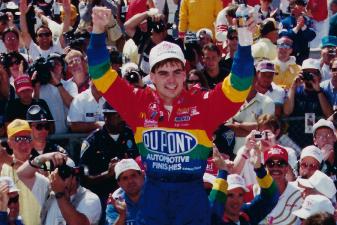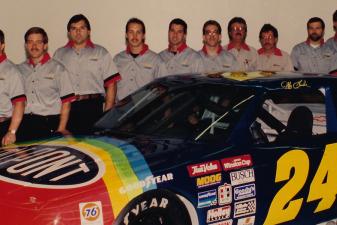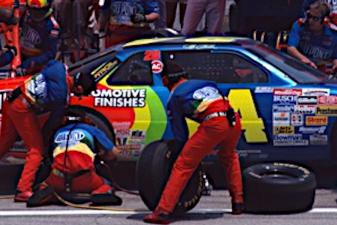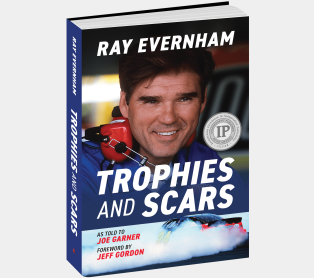Racing Pikes Peak
The following is an excerpt from NASCAR crew chief Ray Evernham's autobiography, Trophies and Scars. You needn’t be a racing fan to appreciate Evernham’s inspiring journey of tireless persistence, radical determination, steadfast leadership, and fearless reinvention. For as he believes, a life lived to the fullest is packed with trophies—and scars. In this excerpt, read about Ray Evernham as he takes off in his car, The Ghost, at Pikes Peak.
The light flashed green. I hit the gas, spinning tires. Just for fun I whipped the wheel to swing the back of the car sideways and fire up the spectators. I blasted through the start line with my tires smoking, tripping the timer, and the race was on.
Next stop: top of the mountain.
In that instant, all the training, everything I’d thought about in the simulator, all came back to me. It was all about “Okay, where are my spots? Where are my marks? Where am I on the hill?” And especially for me, “What gear am I in?”
I wasn’t the greatest shifter. It was one of the things I struggled with. The rear suspension I’d designed used a torque arm that helped with acceleration and braking, but it broke while we were at Indy and we didn’t have time to fix it for Pikes Peak. Now I was having difficulty keeping traction under acceleration and braking. I realized I’d underestimated how much force the engine would have. That engine had 760 pounds of torque in it. It had a ton of power. I wished I’d have had that torque arm, but I just had to run without it. That’s just racing.
When something like that happens, you just adapt. You change the way you work the throttle. You change the way you work the brake.
I do more shifting than I’d like. I tend to downshift too early. I had to keep telling myself, “Don’t rush the shifts, don’t rush the shifts.” But I was trying to match the motor rpm with my shifts. It was all about sound for me going up the mountain. Without that torque arm to help braking, I was uncomfortable on corner entry.
The brake problem damn near caused me to crash twice. The car brake hops really bad, and I almost slammed into the guardrail. Moments later, I thought, “I have a flat tire.” I checked again. “No, it’s just getting colder. I’m losing tire temperature.”
And I was in such thin air now that my downforce was gone.
I was losing time.
The view and terrain change quickly on the ascent. Trees vanish, replaced by Volkswagen-sized boulders, and snow lines both sides of the road. Skid marks dot the pavement, reminders of what can happen if you’re distracted for even a nanosecond.
To the left, the boulders, and to the right, blue sky and big drop-offs. In the next stretch I went straight up like a rocket. All I could see was blue sky.
Okay, where do I make the turn? I stayed far left, hugging the mountain. I don’t want to slide too far right and drop off 1,500 feet.
Luckily, The Ghost has super quick steering—a necessity. As I steered and braked into one of the sharp switchbacks, the weight transferred to the front, causing the rear wheels to bounce under braking again.
Damn! Nine times out of ten, bouncing like that causes wrecks. Just as it jumped sideways again, I saved the car but caught a glimpse of dust in the rear-view mirror, meaning I was only inches away from going off.
Smirking to myself, I thought, “Damn good job there, boy. That could’ve been bad.” But I never thought about stopping. As soon as I made the save, it was eyes front.
When you’re racing up this mountain, you have to focus on where you’re going, not where you’ve been.







